The Cthulhu Mythos Megapack (40 Modern and Classic Lovecraftian Tales) Read online
Page 3
In the morning I had a three-cornered wireless talk with Lake and Captain Douglas at their widely separated bases. It was agreed that one of Lake’s planes would come to my base for Pabodie, the five men, and myself, as well as for all the fuel it could carry. The rest of the fuel question, depending on our decision about an easterly trip, could wait for a few days, since Lake had enough for immediate camp heat and borings. Eventually the old southern base ought to be restocked, but if we postponed the easterly trip we would not use it till the next summer, and, meanwhile, Lake must send a plane to explore a direct route between his new mountains and McMurdo Sound.
Pabodie and I prepared to close our base for a short or long period, as the case might be. If we wintered in the Antarctic we would probably fly straight from Lake’s base to the Arkham without returning to this spot. Some of our conical tents had already been reinforced by blocks of hard snow, and now we decided to complete the job of making a permanent village. Owing to a very liberal tent supply, Lake had with him all that his base would need, even after our arrival. I wirelessed that Pabodie and I would be ready for the northwestward move after one day’s work and one night’s rest.
Our labors, however, were not very steady after 4 P.M., for about that time Lake began sending in the most extraordinary and excited messages. His working day had started unpropitiously, since an aeroplane survey of the nearly-exposed rock surfaces showed an entire absence of those Archaean and primordial strata for which he was looking, and which formed so great a part of the colossal peaks that loomed up at a tantalizing distance from the camp. Most of the rocks glimpsed were apparently Jurassic and Comanchian sandstones and Permian and Triassic schists, with now and then a glossy black outcropping suggesting a hard and slaty coal. This rather discouraged Lake, whose plans all hinged on unearthing specimens more than five hundred million years older. It was clear to him that in order to recover the Archaean slate vein in which he had found the odd markings, he would have to make a long sledge trip from these foothills to the steep slopes of the gigantic mountains themselves.
He had resolved, nevertheless, to do some local boring as part of the expedition’s general program; hence he set up the drill and put five men to work with it while the rest finished settling the camp and repairing the damaged aeroplane. The softest visible rock—a sandstone about a quarter of a mile from the camp—had been chosen for the first sampling; and the drill made excellent progress without much supplementary blasting. It was about three hours afterward, following the first really heavy blast of the operation, that the shouting of the drill crew was heard; and that young Gedney—the acting foreman—rushed into the camp with the startling news.
They had struck a cave. Early in the boring the sandstone had given place to a vein of Comanchian limestone, full of minute fossil cephalopods, corals, echini, and spirifera, and with occasional suggestions of siliceous sponges and marine vertebrate bones—the latter probably of teleosts, sharks, and ganoids. This, in itself, was important enough, as affording the first vertebrate fossils the expedition had yet secured; but when shortly afterward the drill head dropped through the stratum into apparent vacancy, a wholly new and doubly intense wave of excitement spread among the excavators. A good-sized blast had laid open the subterrene secret; and now, through a jagged aperture perhaps five feet across and three feet thick, there yawned before the avid searchers a section of shallow limestone hollowing worn more than fifty million years ago by the trickling ground waters of a bygone tropic world.
The hollowed layer was not more than seven or eight feet deep but extended off indefinitely in all directions and had a fresh, slightly moving air which suggested its membership in an extensive subterranean system. Its roof and floor were abundantly equipped with large stalactites and stalagmites, some of which met in columnar form: but important above all else was the vast deposit of shells and bones, which in places nearly choked the passage. Washed down from unknown jungles of Mesozoic tree ferns and fungi, and forests of Tertiary cycads, fan palms, and primitive angiosperms, this osseous medley contained representatives of more Cretaceous, Eocene, and other animal species than the greatest paleontologist could have counted or classified in a year. Mollusks, crustacean armor, fishes, amphibians, reptiles, birds, and early mammals—great and small, known and unknown. No wonder Gedney ran back to the camp shouting, and no wonder everyone else dropped work and rushed headlong through the biting cold to where the tall derrick marked a new-found gateway to secrets of inner earth and vanished aeons.
When Lake had satisfied the first keen edge of his curiosity, he scribbled a message in his notebook and had young Moulton run back to the camp to dispatch it by wireless. This was my first word of the discovery, and it told of the identification of early shells, bones of ganoids and placoderms, remnants of labyrinthodonts and thecodonts, great mosasaur skull fragments, dinosaur vertebrae and armor plates, pterodactyl teeth and wing bones, Archaeopteryx debris, Miocene sharks’ teeth, primitive bird skulls, and other bones of archaic mammals such as palaeotheres, Xiphodons, Eohippi, Oreodons, and titanotheres. There was nothing as recent as a mastodon, elephant, true camel, deer, or bovine animal; hence Lake concluded that the last deposits had occurred during the Oligocene Age, and that the hollowed stratum had lain in its present dried, dead, and inaccessible state for at least thirty million years.
On the other hand, the prevalence of very early life forms was singular in the highest degree. Though the limestone formation was, on the evidence of such typical imbedded fossils as ventriculites, positively and unmistakably Comanchian and not a particle earlier, the free fragments in the hollow space included a surprising proportion from organisms hitherto considered as peculiar to far older periods—even rudimentary fishes, mollusks, and corals as remote as the Silunan or Ordovician. The inevitable inference was that in this part of the world there had been a remarkable and unique degree of continuity between the life of over three hundred million years ago and that of only thirty million years ago. How far this continuity had extended beyond the Oligocene Age when the cavern was closed was of course past all speculation. In any event, the coming of the frightful ice in the Pleistocene some five hundred thousand years ago—a mere yesterday as compared with the age of this cavity—must have put an end to any of the primal forms which had locally managed to outlive their common terms.
Lake was not content to let his first message stand, but had another bulletin written and dispatched across the snow to the camp before Moulton could get back. After that Moulton stayed at the wireless in one of the planes, transmitting to me—and to the Arkham for relaying to the outside world—the frequent postscripts which Lake sent him by a succession of messengers. Those who followed the newspapers will remember the excitement created among men of science by that afternoon’s reports—reports which have finally led, after all these years, to the organization of that very Starkweather-Moore Expedition which I am so anxious to dissuade from its purposes. I had better give the messages literally as Lake sent them, and as our base operator McTighe translated them from the pencil shorthand:
“Fowler makes discovery of highest importance in sandstone and limestone fragments from blasts. Several distinct triangular striated prints like those in Archaean slate, proving that source survived from over six hundred million years ago to Comanchian times without more than moderate morphological changes and decrease in average size. Comanchian prints apparently more primitive or decadent, if anything, than older ones. Emphasize importance of discovery in press. Will mean to biology what Einstein has meant to mathematics and physics. Joins up with my previous work and amplifies conclusions.
“Appears to indicate, as I suspected, that the Earth has seen whole cycle or cycles of organic life before known one that begins with Archaeozoic cells. Was evolved and specialized not later than a thousand million years ago, when planet was young and recently uninhabitable for any life forms or normal protoplasmic structure. Question arises when, where, and how development took place.”
“Later. Examining certain skeletal fragments of large land and marine saurians and primitive mammals, find singular local wounds or injuries to bony structure not attributable to any known predatory or carnivorous animal of any period, of two sorts—straight, penetrant bores, and apparently hacking incisions. One or two cases of cleanly severed bones. Not many specimens affected. Am sending to camp for electric torches. Will extend search area underground by hacking away stalactites.”
*
“Still later. Have found peculiar soapstone fragment about six inches across and an inch and a half thick, wholly unlike any visible local formation—greenish, but no evidences to place its period. Has curious smoothness and regularity. Shaped like five-pointed star with tips broken off, and signs of other cleavage at inward angles and in center of surface. Small, smooth depression in center of unbroken surface. Arouses much curiosity as to source and weathering. Probably some freak of water action. Carroll, with magnifier, thinks he can make out additional markings of geologic significance. Groups of tiny dots in regular patterns. Dogs growing uneasy as we work, and seem to hate this soapstone. Must see if it has any peculiar odor. Will report again when Mills gets back with light and we start on underground area.”
* * * *
“10:15 P.M. Important discovery. Orrendorf and Watkins, working underground at 9:45 with light, found monstrous barrel-shaped fossil of wholly unknown nature; probably vegetable unless overgrown specimen of unknown marine radiata. Tissue evidently preserved by mineral salts. Tough as leather, but astonishing flexibility retained in places. Marks of broken-off parts at ends and around sides. Six feet end to end, three and five-tenths feet central diameter, tapering to one foot at each end. Like a barrel with five bulging ridges in place of staves. Lateral breakages, as of thinnish stalks, are at equator in middle of these ridges. In furrows between ridges are curious growths—combs or wings that fold up and spread out like fans. All greatly damaged but one, which gives almost seven-foot wing spread. Arrangement reminds one of certain monsters of primal myth, especially fabled Elder Things in Necronomicon.
“Their wings seem to be membranous, stretched on frame work of glandular tubing. Apparent minute orifices in frame tubing at wing tips. Ends of body shriveled, giving no clue to interior or to what has been broken off there. Must dissect when we get back to camp. Can’t decide whether vegetable or animal. Many features obviously of almost incredible primitiveness. Have set all hands cutting stalactites and looking for further specimens. Additional scarred bones found, but these must wait. Having trouble with dogs. They can’t endure the new specimen, and would probably tear it to pieces if we didn’t keep it at a distance from them.”
* * * *
“11:30 P.M. Attention, Dyer, Pabodie, Douglas. Matter of highest—I might say transcendent—importance. Arkham must relay to Kingsport Head Station at once. Strange barrel growth is the Archaean thing that left prints in rocks. Mills, Boudreau, and Fowler discover cluster of thirteen more at underground point forty feet from aperture. Mixed with curiously rounded and configured soapstone fragments smaller than one previously found—star-shaped, but no marks of breakage except at some of the points.
“Of organic specimens, eight apparently perfect, with all appendages. Have brought all to surface, leading off dogs to distance. They cannot stand the things. Give close attention to description and repeat back for accuracy Papers must get this right.
“Objects are eight feet long all over. Six-foot, five-ridged barrel torso three and five-tenths feet central diameter, one foot end diameters. Dark gray, flexible, and infinitely tough. Seven-foot membranous wings of same color, found folded, spread out of furrows between ridges. Wing framework tubular or glandular, of lighter gray, with orifices at wing tips. Spread wings have serrated edge. Around equator, one at central apex of each of the five vertical, stave-like ridges are five systems of light gray flexible arms or tentacles found tightly folded to torso but expansible to maximum length of over three feet. Like arms of primitive crinoid. Single stalks three inches diameter branch after six inches into five substalks, each of which branches after eight inches into small, tapering tentacles or tendrils, giving each stalk a total of twenty-five tentacles.
“At top of torso blunt, bulbous neck of lighter gray, with gill-like suggestions, holds yellowish five-pointed starfish-shaped apparent head covered with three-inch wiry cilia of various prismatic colors.
“Head thick and puffy, about two feet point to point, with three-inch flexible yellowish tubes projecting from each point. Slit in exact center of top probably breathing aperture. At end of each tube is spherical expansion where yellowish membrane rolls back on handling to reveal glassy, red-irised globe, evidently an eye.
“Five slightly longer reddish tubes start from inner angles of starfish-shaped head and end in saclike swellings of same color which, upon pressure, open to bell-shaped orifices two inches maximum diameter and lined with sharp, white tooth like projections—probably mouths. All these tubes, cilia, and points of starfish head, found folded tightly down; tubes and points clinging to bulbous neck and torso. Flexibility surprising despite vast toughness.
“At bottom of torso, rough but dissimilarly functioning counterparts of head arrangements exist. Bulbous light-gray pseudo-neck, without gill suggestions, holds greenish five-pointed starfish arrangement.
“Tough, muscular arms four feet long and tapering from seven inches diameter at base to about two and five-tenths at point. To each point is attached small end of a greenish five-veined membranous triangle eight inches long and six wide at farther end. This is the paddle, fin, or pseudofoot which has made prints in rocks from a thousand million to fifty or sixty million years old.
“From inner angles of starfish arrangement project two-foot reddish tubes tapering from three inches diameter at base to one at tip. Orifices at tips. All these parts infinitely tough and leathery, but extremely flexible. Four-foot arms with paddles undoubtedly used for locomotion of some sort, marine or otherwise. When moved, display suggestions of exaggerated muscularity. As found, all these projections tightly folded over pseudoneck and end of torso, corresponding to projections at other end.
“Cannot yet assign positively to animal or vegetable kingdom, but odds now favor animal. Probably represents incredibly advanced evolution of radiata without loss of certain primitive features. Echinoderm resemblances unmistakable despite local contradictory evidences.
“Wing structure puzzles in view of probable marine habitat, but may have use in water navigation. Symmetry is curiously vegetablelike, suggesting vegetable’s essential up-and-down structure rather than animal’s fore-and-aft structure. Fabulously early date of evolution, preceding even simplest Archaean protozoa hitherto known, baffles all conjecture as to origin.
“Complete specimens have such uncanny resemblance to certain creatures of primal myth that suggestion of ancient existence outside Antarctic becomes inevitable. Dyer and Pabodie have read Necronomicon and seen Clark Ashton Smith’s nightmare paintings based on text, and will understand when I speak of Elder Things supposed to have created all earth life as jest or mistake. Students have always thought conception formed from morbid imaginative treatment of very ancient tropical radiata. Also like prehistoric folklore things Wilmarth has spoken of—Cthulhu cult appendages, etc.
“Vast field of study opened. Deposits probably of late Cretaceous or early Eocene period, judging from associated specimens. Massive stalagmites deposited above them. Hard work hewing out, but toughness prevented damage. State of preservation miraculous, evidently owing to limestone action. No more found so far, but will resume search later. Job now to get fourteen huge specimens to camp without dogs, which bark furiously and can’t be trusted near them.
“With nine men—three left to guard the dogs—we ought to manage the three sledges fairly well, though wind is bad. Must establish plane communication with McMurdo Sound and begin shipping material. But I’ve got to dissect one of these things befor
e we take any rest. Wish I had a real laboratory here. Dyer better kick himself for having tried to stop my westward trip. First the world’s greatest mountains, and then this. If this last isn’t the high spot of the expedition, I don’t know what is. We’re made scientifically. Congrats, Pabodie, on the drill that opened up the cave. Now will Arkham please repeat description?”
The sensations of Pabodie and myself at receipt of this report were almost beyond description, nor were our companions much behind us in enthusiasm. McTighe, who had hastily translated a few high spots as they came from the droning receiving set, wrote out the entire message from his shorthand version as soon as Lake’s operator signed off. All appreciated the epoch-making significance of the discovery, and I sent Lake congratulations as soon as the Arkham’s operator had repeated back the descriptive parts as requested; and my example was followed by Sherman from his station at the McMurdo Sound supply cache, as well as by Captain Douglas of the Arkham. Later, as head of the expedition, I added some remarks to be relayed through the Arkham to the outside world. Of course, rest was an absurd thought amidst this excitement; and my only wish was to get to Lake’s camp as quickly as I could. It disappointed me when he sent word that a rising mountain gale made early aerial travel impossible.

![[What Might Have Been 02] Alternate Heroes Read online](http://i1.bookreadfree.com/27/what_might_have_been_02_alternate_heroes_preview.jpg) [What Might Have Been 02] Alternate Heroes
[What Might Have Been 02] Alternate Heroes![[What Might Have Been 01] Alternate Empires Read online](http://i1.bookreadfree.com/01/what_might_have_been_01_alternate_empires_preview.jpg) [What Might Have Been 01] Alternate Empires
[What Might Have Been 01] Alternate Empires SEDUCTIVE: A Contemporary Romance Anthology
SEDUCTIVE: A Contemporary Romance Anthology A Year of Love
A Year of Love Super Daddies: A Naughty Nerdy Romantic Comedy Anthology
Super Daddies: A Naughty Nerdy Romantic Comedy Anthology Mystical Xmas: Paranormal Romance Anthology Box Set
Mystical Xmas: Paranormal Romance Anthology Box Set![[What Might Have Been 04] Alternate Americas Read online](http://i1.bookreadfree.com/06/what_might_have_been_04_alternate_americas_preview.jpg) [What Might Have Been 04] Alternate Americas
[What Might Have Been 04] Alternate Americas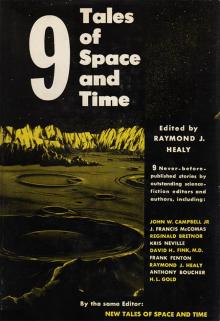 9 Tales of Space and Time
9 Tales of Space and Time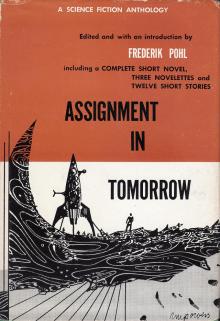 Assignment in Tomorrow
Assignment in Tomorrow![[What Might Have Been 03] Alternate Wars Read online](http://i1.bookreadfree.com/i/03/16/what_might_have_been_03_alternate_wars_preview.jpg) [What Might Have Been 03] Alternate Wars
[What Might Have Been 03] Alternate Wars The Complete Dangerous Visions
The Complete Dangerous Visions The IF Reader of Science Fiction
The IF Reader of Science Fiction Holiday in the Heart
Holiday in the Heart Torquere Press Sips and Shots
Torquere Press Sips and Shots Possess: An Alpha Anthology
Possess: An Alpha Anthology Beyond Control
Beyond Control Bad Boys Under the Mistletoe: A Begging for Bad Boys Collection
Bad Boys Under the Mistletoe: A Begging for Bad Boys Collection Hugo Awards: The Short Stories (Volume 3)
Hugo Awards: The Short Stories (Volume 3) The Second IF Reader of Science Fiction
The Second IF Reader of Science Fiction Astounding Science Fiction Stories Vol 1
Astounding Science Fiction Stories Vol 1 What Happens Over Spring Break: A Short Story Anthology
What Happens Over Spring Break: A Short Story Anthology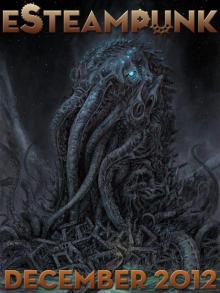 eSteampunk Vol. 01 No. 02
eSteampunk Vol. 01 No. 02 SHADOWRUN: Spells and Chrome (shadowrun)
SHADOWRUN: Spells and Chrome (shadowrun) Dark Tales
Dark Tales Getting Schooled (Craving #9)
Getting Schooled (Craving #9) The Hellfire Book of Beltane Volume One
The Hellfire Book of Beltane Volume One The Alpha's
The Alpha's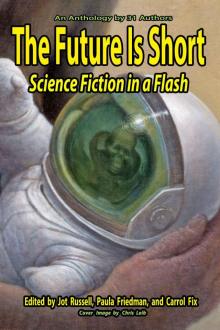 The Future Is Short
The Future Is Short From the Heart: A Valentine's Day Anthology
From the Heart: A Valentine's Day Anthology Reckless: A Bad Boyz Anthology
Reckless: A Bad Boyz Anthology LOL #3 Romantic Comedy Anthology
LOL #3 Romantic Comedy Anthology A Christmas Seduction: A Regency Anthology
A Christmas Seduction: A Regency Anthology All a Cowboy Wants for Christmas
All a Cowboy Wants for Christmas Hugo Awards: The Short Stories (Volume 2)
Hugo Awards: The Short Stories (Volume 2) The Golden Age of Science Fiction Novels Vol 01
The Golden Age of Science Fiction Novels Vol 01 The Sirens of SaSS Anthology
The Sirens of SaSS Anthology Mistletoe & Kisses
Mistletoe & Kisses Explorers of Space
Explorers of Space Time Travel Omnibus Volume 2
Time Travel Omnibus Volume 2 Dead Science: A Zombie Anthology
Dead Science: A Zombie Anthology Beer Goggles Anthology
Beer Goggles Anthology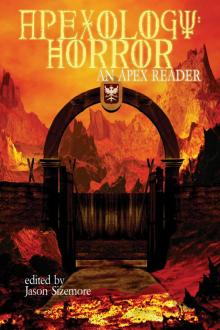 Apexology: Horror
Apexology: Horror Heat Wave: A Summer Loving Anthology
Heat Wave: A Summer Loving Anthology Fall in Love
Fall in Love Love Under the Mistletoe
Love Under the Mistletoe Hook & Ladder 69: Eighteen Authors...One Sexy Firehouse.
Hook & Ladder 69: Eighteen Authors...One Sexy Firehouse. LOL #2 Romantic Comedy Anthology - Volume 2 - Even More All-New Romance Stories by Bestselling Authors (LOL Romantic Comedy Anthology #2)
LOL #2 Romantic Comedy Anthology - Volume 2 - Even More All-New Romance Stories by Bestselling Authors (LOL Romantic Comedy Anthology #2) Off the Beaten Path: Eight Tales of the Paranormal
Off the Beaten Path: Eight Tales of the Paranormal![Best New Zombie [3] - Best New Zombie Tales, Vol. 3 Read online](http://i1.bookreadfree.com/i/03/25/best_new_zombie_3_-_best_new_zombie_tales_vol_3_preview.jpg) Best New Zombie [3] - Best New Zombie Tales, Vol. 3
Best New Zombie [3] - Best New Zombie Tales, Vol. 3 The Golden Age of Science Fiction Novels Vol 05
The Golden Age of Science Fiction Novels Vol 05 Alphas of Sin
Alphas of Sin Halloween Spirits: 11 Tales for the Darkest Night
Halloween Spirits: 11 Tales for the Darkest Night Night Shift 2
Night Shift 2 Ellora's Cavemen: Jewels of the Nile II
Ellora's Cavemen: Jewels of the Nile II Hot for the Holidays (21 Holiday Short Stories): A Collection of Naughty and Nice Holiday Romances
Hot for the Holidays (21 Holiday Short Stories): A Collection of Naughty and Nice Holiday Romances Of Heaven and Hell
Of Heaven and Hell 12 Christmas Romances To Melt Your Heart
12 Christmas Romances To Melt Your Heart '90s Playlist (Romance Rewind #1)
'90s Playlist (Romance Rewind #1) Bleed Blue 69: Twenty-Five Authors…One Sexy Police Station
Bleed Blue 69: Twenty-Five Authors…One Sexy Police Station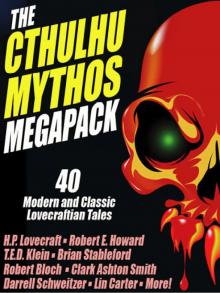 The Cthulhu Mythos Megapack (40 Modern and Classic Lovecraftian Tales)
The Cthulhu Mythos Megapack (40 Modern and Classic Lovecraftian Tales) Nova 3
Nova 3 Unbroken: 13 Stories Starring Disabled Teens
Unbroken: 13 Stories Starring Disabled Teens Dead Men (and Women) Walking
Dead Men (and Women) Walking Sweet Seduction
Sweet Seduction Brothel: The Magnolia Diaries
Brothel: The Magnolia Diaries Rogues (A Boys Behaving Badly Anthology #1)
Rogues (A Boys Behaving Badly Anthology #1) Best New Zombie Tales, Vol. 3
Best New Zombie Tales, Vol. 3![The Hellfire Bo [1] - The Hellfire Book of Beltane Volume One Read online](http://i1.bookreadfree.com/i1/04/06/the_hellfire_bo_1_-_the_hellfire_book_of_beltane_volume_one_preview.jpg) The Hellfire Bo [1] - The Hellfire Book of Beltane Volume One
The Hellfire Bo [1] - The Hellfire Book of Beltane Volume One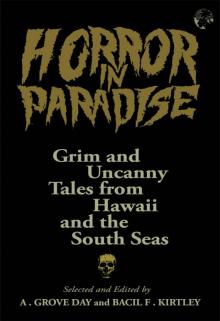 Horror in Paradise
Horror in Paradise Time Travel Omnibus Volume 1
Time Travel Omnibus Volume 1 More Than Words: Stories of Courage
More Than Words: Stories of Courage River Walk: Ten Kinky Collaborations
River Walk: Ten Kinky Collaborations F*cking Awkward
F*cking Awkward Hearts of England
Hearts of England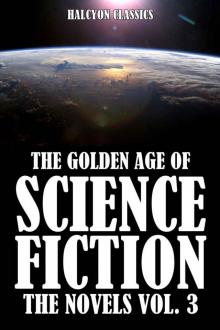 The Golden Age of Science Fiction Novels Vol 03
The Golden Age of Science Fiction Novels Vol 03 Drunk in Love
Drunk in Love Up and Coming: Stories by the 2016 Campbell-Eligible Authors
Up and Coming: Stories by the 2016 Campbell-Eligible Authors Descended from Darkness: Apex Magazine Vol I
Descended from Darkness: Apex Magazine Vol I Dominant Persuasions Anthology: 12 Tales of D/s, Where Mastery Meets Passion
Dominant Persuasions Anthology: 12 Tales of D/s, Where Mastery Meets Passion The Golden Age of Science Fiction Novels Vol 04
The Golden Age of Science Fiction Novels Vol 04 Passion in Portland 2016 Anthology
Passion in Portland 2016 Anthology Men of Mayhem
Men of Mayhem The Dirty Anthology
The Dirty Anthology Hot For Teacher
Hot For Teacher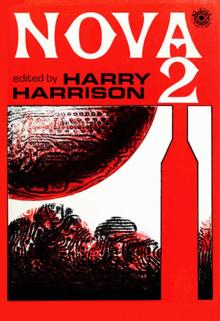 Nova 2
Nova 2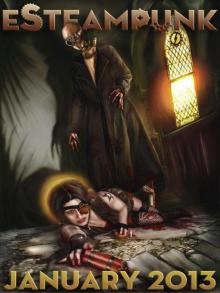 eSteampunk Vol. 01 No. 03
eSteampunk Vol. 01 No. 03 Afternoon Tea Mysteries Vol Three
Afternoon Tea Mysteries Vol Three Romance in the Rain
Romance in the Rain Tales From the Crossroad Volume 1
Tales From the Crossroad Volume 1 A Very Alpha Christmas
A Very Alpha Christmas Nova 1
Nova 1 Once: A Collection of Sinfully Sexy and Twisted Tales
Once: A Collection of Sinfully Sexy and Twisted Tales Nuts About You: A Testicular Cancer Anthology
Nuts About You: A Testicular Cancer Anthology From the Street (shadowrun stories)
From the Street (shadowrun stories) Box of 1Night Stands: 21 Sizzling Nights
Box of 1Night Stands: 21 Sizzling Nights Descended from Darkness: Vol II
Descended from Darkness: Vol II Pink Shades of Words: Walk 2016
Pink Shades of Words: Walk 2016 The Art of Taking Chances
The Art of Taking Chances The Butterfly Box_A SASS Anthology
The Butterfly Box_A SASS Anthology Harlan County Horrors
Harlan County Horrors![Afternoon Tea Mysteries [Vol Three] Read online](http://i1.bookreadfree.com/i2/04/12/afternoon_tea_mysteries_vol_three_preview.jpg) Afternoon Tea Mysteries [Vol Three]
Afternoon Tea Mysteries [Vol Three] The Golden Age of Science Fiction Novels Vol 02
The Golden Age of Science Fiction Novels Vol 02 Ellora's Cavemen: Jewels of the Nile III
Ellora's Cavemen: Jewels of the Nile III